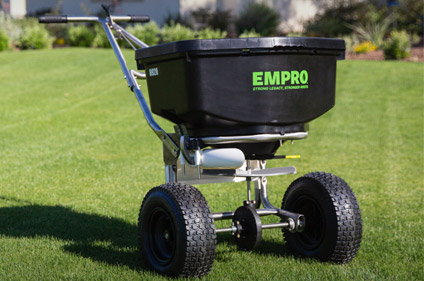It's easy to assume that non-calibrated spreaders can be off by at least 10% or more. Consider this: if one applicator is applying 10% more per day, we could be talking about hundreds of dollars per week. But multiply that by 3, 5, or 50 techs in the case of larger operations, and that number adds up fast.
In addition, recognizing a misapplication throughout the day would be very difficult. Conversely, what if that same spreader is off by 10% on the low side? It would mean applications of combination products such as fertilizers with pre-emergent herbicides or preventative insect controls are being applied at lower than recommended rates.
Why is that a big deal? One word…BREAKTHROUGH! Variability in weather patterns some years makes effective pre-emergent weed control tough enough - why risk a greater potential for failure?
When breakthrough occurs, it can cost the company more money in terms of post-emergent applications. Taking a few extra minutes to ensure accurate application rates eliminates the potential for errors.
Spreaders should be re-calibrated for each different material that is planned to be used. Bulk density, particle sizing, and uniformity all play a role in achieving uniform application, and there could be small variations from product to product. Blindly trusting the number on the bag and on the spreader itself can easily set the applicator up for failure. For example, Kevin Lewis of the Ewing Technical Services Team had two spreaders that he would use to fertilize putting greens. By using the step gauge method, he was able to see a difference of greater than ½ of a setting number between two identical pieces of equipment. This deviation could be the difference between success and failure.
For detailed information about both broadcast and drop spreader calibration, visit the Pennsylvania State University Extension website.
The only aspect that Kevin recommends doing differently is how you set up the actual application course. Kevin will measure the effective spread width, then use that to divide into 1000. In other words, if the spread width is 6 feet, he will divide 1000 by that and use that number to set the distance of application. If the spreader covers 6 feet, then the distance to travel is 166.7 feet.
Reach out to the Ewing Technical Services Team with any questions about spreader calibration.




